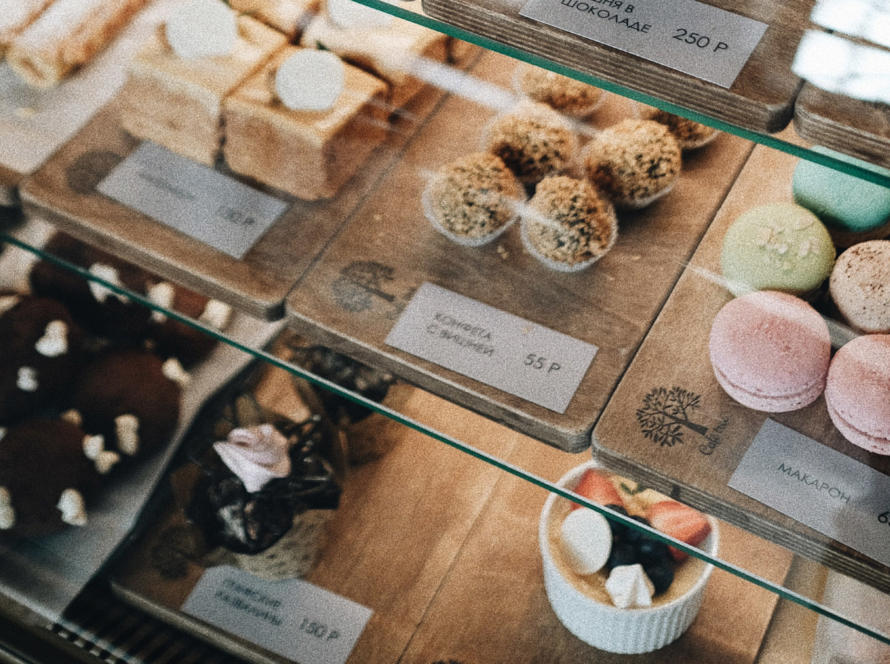There are a few circulating stories about the discovery of the effects of coffee and its initial consumption. They all revolve around an Ethiopian goat herder called Kaldi. It’s said on one fateful day Kaldi noticed goats in his heard behaving inordinately energetically. On further observation he linked their behaviour with red berries growing on some bushes which they were seen eating.
Curious; he tried the berries and found he too began to feel animated. It wasn’t long before he shared this new discovery with others and the berries became popular throughout the land. It’s not known if Kaldi was a member of the Oromo tribe in Ethiopia but they are said to have consumed a mixture of ground berries and animal fat earlier than 1000AD.
Arab traders soon encountered coffee in their travels bringing it back to their homelands and cultivating the plant on farms. It was these Arab traders around 1000AD who were also likely to be the first to have boiled the beans consuming them as a drink identified for its ability to prevent sleep.
Bernard Lewis, in his “Istanbul and the Civilization of the Ottoman Empire”, tells of the ottoman scribe İbrahim Peçevi who wrote of the first coffeehouse in Istanbul:
“Until the year 1555, in the High, God-Guarded city of Constantinople, as well as in Ottoman lands generally, coffee and coffee-houses did not exist. About that year, a fellow called Hakam from Aleppo and a wag called Shams from Damascus came to the city; they each opened a large shop in the district called Tahtakale, and began to purvey coffee.”
The demand for coffee around this time escalated to such importance that soon it was legally acceptable for a woman to divorce her husband if he was not able to supply her with her daily coffee.
Around 150 years later coffee was introduced to Italy by Italian traders. Although initially declared an infidel threat by the Vatican in fear of Ottoman influence, Pope Clement the VIII after no doubt tasting the drink himself was quick to declare it acceptable for Christian consumption. In 1645 the first of what would be many coffeehouses opened in Italy.
In 1650 the fist coffee house in England The Grand Cafe is alleged to have been opened in Oxford. The café exists to this day though their speciality is now wine. Soon thereafter more and more cafes began to open around England. They became a place to share ideas and news of the day. It was from here the term ‘Penny Universities’ was coined. A penny was the price of admission, an affordable sum, which allowed the well to do to share ideas with those who were less fortunate. Two years later, a Greek from Ragusa named Pascal Rosea opened the first coffeehouse in London, in Cornhill. In 1668 Edward Lloyd opened his famous Coffee House in Lombard Street, London, which soon became a popular congregation for shipowners and sea merchants.
1668 was a pivotal year in coffees adaptation into north American culture as this was the year that New York City’s favourite breakfast drink beer was replaced by coffee.
Pascal Rosea after opening the first coffee house in London also established the first coffee house in Paris France in 1672. The café stood alone as a coffee outlet in the city until Café Procope opened in 1686. Café Procope is still in existence and boasts a history of being the gathering place of historic figures such as Voltaire, Denis Diderot and Rousseau. Café Procope will also argue it’s right as the birthplace of the Encyclopédie, the first modern encyclopedia.
Europe’s first Viennese café is commonly accepted as being opened by a Greek merchant named Ioannis Diodato in 1675. It was coffee houses in Vienna that established the process of filtering out the coffee grounds adding sugar and milk. A vienna coffee is one prepared with cream, this perhaps a throwback to Viennese influence.
It was circa 1690 that the coffee plant was smuggled out of the Arab port of Mocha by the Dutch and transported and farmed in new colonies in Ceylon and Java. Java is now a well known bean origin.
The mayor of Amsterdam gave Louis XIV of France a small coffee bush as a gift in 1714. Louis XIV treasured the tree highly and had it tended to in his royal greenhouses. Years later in 1723 a French Captain who; whilst visiting from his station in Martinique managed to convince the kings physician to source a cutting from the bush. His intention was to cultivate coffee on the lush volcanic island of Martinique. This cutting may very well have seen up to 90% of the worlds coffee originating from this plant and it almost didn’t make it to Martinique due to rough seas, attempted theft and pirates. Fifty years later there there were 19 million coffee trees which were noted in an official survey.
1727 was a pivotal chapter in the proliferation of the coffee tree. It was in this year in Guianna; at a time of border disputes between France and Holland, a Lieutenant Colonel Francisco de Melo Palheta manages to smuggle a plant from the French. During his time there arbitrating the dispute, the colonel became involved with the French governor’s wife. At the time of their parting the governor’s wife presented to him a bouquet of flowers which also contained coffee tree clippings and seeds. Lieutenant Colonel Francisco de Melo Palheta returned to Brasil introducing on his arrival the coffee tree. Brazil would unbeknownst to him at the time, become in years to come the largest producer of coffee in the world.
In 1773 it was declared at Boston Harbour in the US that it shall be every American’s patriotic duty to drink coffee. After heavy taxes were imposed on tea exported to America, colonists in the new nation began a revolt by throwing tea into the Boston Harbour, thus the name ‘Boston Tea Party’. This action by the Boston Tea Party not only set the wheels in motion for the revolution but it also led to the adaptation of coffee as America’s choice drink.
On August 11 1903 Satori Kato a Japanese Chemist working in the US filed for patent the “Coffee Concentrate and Process of Making Same,” the first patent for instant coffee. That is not to say water soluble coffee was not in existence at the time, although it had a very short shelf life and went rancid very quickly. It was due to this that the idea of instant coffee disappeared as soon as it emerged prior to Satori Kato. In his April 1901 patent application Satori Kato explains the problem and how he solved it:
“ The volatile oil is mixed with the solid aqueous extract, but I have discovered that an attempt to effect this without other precaution results in the production of a pasty sticky mass which does not resist rancidity, but quickly spoils under the usual conditions of transportation and storage. I have further discovered that the difficulty arises from the presence of in the concentrate of the non-volatile coffee-fat or at any rate is overcome by its removal, which, I believe, I am the first to effect.
I separate the volatile oil and the fats from the coffee and remove the fibre and reduce to a hard substance. This hard substance is reduced to a finely divided condition and a portion thereof is pulverized and thoroughly mixed with the pure volatile oil and dried, after which this mixture is mixed with the remainder of the hard substance and used in this granulated or flaky form or pressed into tablets.”
In Germany around this time Ludwig Roselius a German Coffee Merchant develops the first commercially successful decaffeination process in Bremen Germany with his assistant Karl Kimmer. This process used benzene or methylene chloride as a solvent to remove the caffeine. Ludwig Roselius founded the brand Sanka to market his decaffeinated beans. Today the use of Chemicals to remove caffeine is no longer in use.
Another inventor, Englishman George Constant Washington, living in Guatemala noticed powdery coffee build-up on the spout of his coffee carafe, He soon goes on to develop his own instant coffee and mass-produces his brand Red E Coffee in 1906. Red E Coffee was procured as rations for US troops during World War I. Nescafe soon developed an improved process and started marketing their brand in 1938. They went on to supply the US military with coffee rations during World War II. By 1940 the US was importing up to 70 percent of the worlds coffee harvest.
Achilles Gaggia and The Birth Of Modern Espresso
The Gaggia story begins with Mrs Rosetta Scorza, the wife of Sr. Cremonese a coffee grinder technician in Milan who patented the idea of a screw piston which forced water through coffee in the 1930s. When Cremonese died leaving Rosetta Scorza with the patent she was largely unsuccessful in interesting manufacturers with the design.
We can assume Gaggia a bar owner was perhaps approached by Rosetta, as we know in 1938 Gaggia lodged a patent application for a piston mechanism doing largely the same thing as the Cremonese patent. Gaggia went on to further develop and patent a screw piston forged from aluminium and brass, the distinct difference this time is that he had connected this system to a boiler. Gaggia experimented with various styles and materials including surprisingly asbestos in an effort regulate temperature. Gaggia’s design did encroach on Rosetta Scorza’s patent and led to Gaggia making a payment in using the design.
Gaggia went on in 1947 to patent a spring operated lever and piston mechanism which was totally different to previous patents, this paved the way for pressurised coffee and the machines we know of today. This new patent allowed for pressurised water pushed through the coffee independently of the pressure in the boiler, it also allowed the temperature to be regulated with a quicker and stronger extraction. Gaggia was now producing coffee unlike any other seen or tasted before, his extraction process was producing a rich golden crema, and perhaps he was a little unsure of it himself, but being the salesman he was, he wasted no time in installing his machines in bars and advertising the product with a sign on the window saying “Caffe crema di caffe natural” – coffee cream from natural coffee.
From there the adoption of the new style coffee gained momentum and soon Gaggia was exporting his machines worldwide aiding in the proliferation of espresso coffee all over the world.




